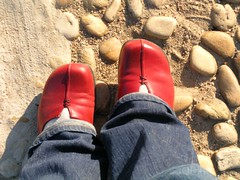 Image by Nick Sherman via FlickrBy Juan Cuervo
Image by Nick Sherman via FlickrBy Juan CuervoHippies and surfers alike love baja sweaters, which are commonly known as baja hoodies or drug rugs. These very famous baja sweatshirts were first made popular in the 70's by hippies and California surfers. They went away for a few years but have made a comeback in the last couple years and they are now being worn by everyone in every state. It is difficult to go anywhere now without seeing a baja pullover being worn by someone. Hippies are known for starting fashion trends like bell bottoms and tie dye clothing.
The Mexican baja hoodie has a very distinguishable look to it. They always have a hood and they have vertical stripes going up and down but there are horizontal stripes on the pocket that is in the front for the hands. They are typically made out of 100% acrylic but there are some that are made of 100% cotton but they are much harder to come across. Another popular material is 50% acrylic, 40% polyester and 10% cotton. They baja pullovers go as large as 3X but they are very hard to find online.
The baja poncho was known as a drug rug hoodie for a long time because most people that wore them tended to use drugs. But now they are more commonly seen on college students and high school kids. If you are looking for a gift for anyone in your family, you just simply can't go wrong with buying them an authentic Mexican sweater poncho.
You can buy a baja sweater online at Mexican Threads, the #1 store online for baja sweaters.
Article Source: http://EzineArticles.com/?expert=Juan_Cuervo
http://EzineArticles.com/?Baja-Sweaters-and-Hippie-Poncho-Pullovers&id=5958701


